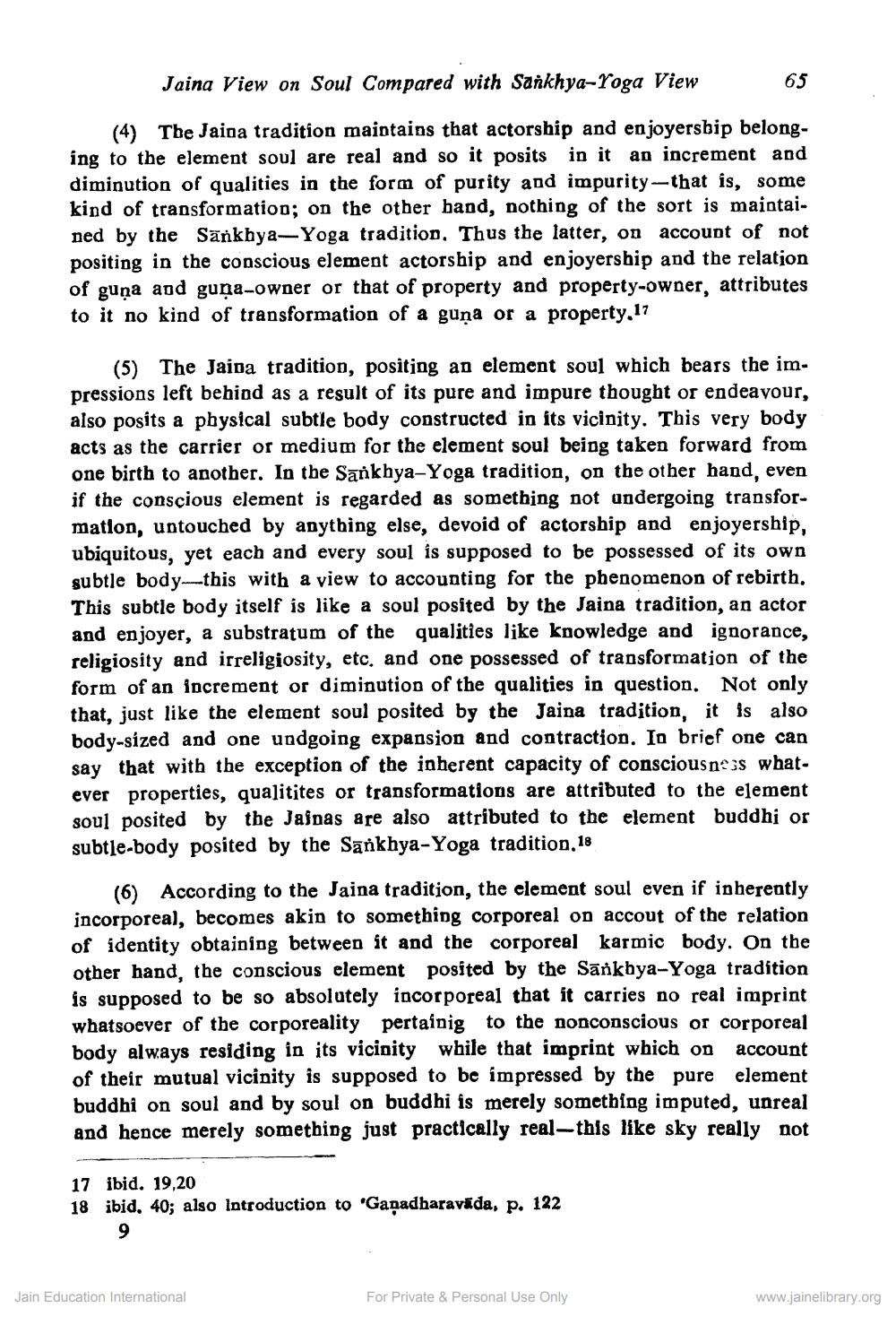________________
Jaina View on Soul Compared with Sankhya-Yoga View
65
(4) The Jaioa tradition maintains that actorship and enjoyership belonging to the element soul are real and so it posits in it an increment and diminution of qualities in the form of purity and impurity--that is, some kind of transformation; on the other hand, nothing of the sort is maintained by the Sänkhya-Yoga tradition. Thus the latter, on account of not positing in the conscious element actorship and enjoyership and the relation of guņa and guņa-owner or that of property and property-owner, attributes to it no kind of transformation of a guņa or a property. 17
(5) The Jaipa tradition, positing an element soul which bears the impressions left behind as a result of its pure and impure thought or endeavour, also posits a physical subtle body constructed in its vicinity. This very body acts as the carrier or medium for the element soul being taken forward from one birth to another. In the Sankhya-Yoga tradition, on the other hand, even if the conscious element is regarded as something not undergoing transformation, untouched by anything else, devoid of actorship and enjoyership, ubiquitous, yet each and every soul is supposed to be possessed of its own subtle body--this with a view to accounting for the phenomenon of rebirth, This subtle body itself is like a soul posited by the Jaina tradition, an actor and enjoyer, a substratum of the qualities like knowledge and ignorance, religiosity and irreligiosity, etc. and one possessed of transformation of the form of an increment or diminution of the qualities in question. that, just like the element soul posited by the Jaina tradition, it is also body-sized and one undgoing expansion and contraction. In brief one can say that with the exception of the inherent capacity of consciousness whatever properties, qualities or transformations are attributed to the element soul posited by the Jainas are also attributed to the element buddhi or subtle-body posited by the Sankhya-Yoga tradition. 18
(6) According to the Jaina tradition, the element soul even if inherently incorporeal, becomes akin to something corporeal on accout of the relation of identity obtaining between it and the corporeal karmic body. On the other hand, the conscious element posited by the Sankhya-Yoga tradition is supposed to be so absolutely incorporeal that it carries no real imprint whatsoever of the corporeality pertainig to the nonconscious or corporeal body always residing in its vicinity while that imprint which on account of their mutual vicinity is supposed to be impressed by the pure element buddhi on soul and by soul on buddhi is merely something imputed, unreal and hence merely something just practically real-this like sky really not
17 ibid. 19,20 18 ibid. 40; also Introduction to 'Gañadharavada, p. 122
Jain Education International
For Private & Personal Use Only
www.jainelibrary.org




